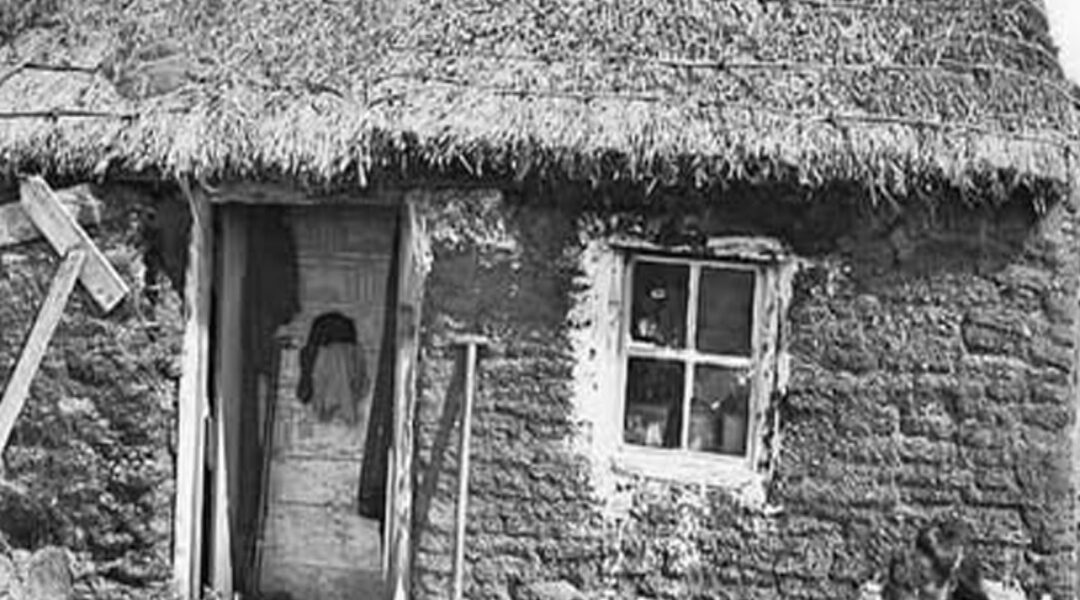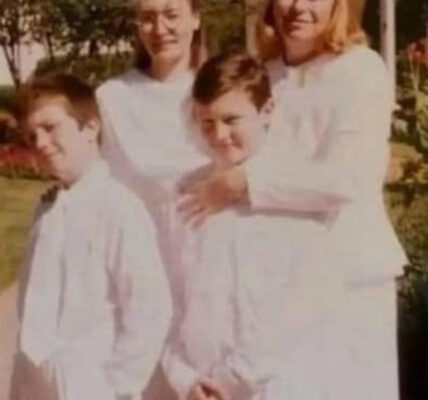This photograph, taken around 1900 in County Antrim, Ireland, might look quaint to us now — a little cottage with its thatched roof and leaning shovel, a woman sitting outside in the grass, and a cat resting by the door. But behind its quiet charm lies a story of endurance, hardship, and a kind of strength we rarely speak of anymore.

These small dwellings were called botháin dóibe — sod cabins. Built not from timber or stone, but from the land itself. Thick grass, bound with roots and earth, was cut into blocks and stacked like bricks.
The grass side faced down, the soil side up, row upon row, until the walls were high enough to hold a thatched roof. They were homes born from necessity, shaped by poverty, and held together by will.
There was no insulation, no plaster, no comfort. The walls, when wet, would weep. The floor was packed dirt, often damp and cold. Windows, if they existed at all, were hacked out after the walls were built — small, uneven holes covered by cloth or wood shutters.
Many cabins had no chimney, so the smoke from the fire inside simply drifted up through the roof or out the open door. The air was thick with soot and the smell of turf smoke. In the long Irish winters, the wind seeped through every crack, and families huddled together for warmth.
Inside, life was as bare as the walls. A single fire for cooking and heat. A pot. A table, if they were lucky.
Beds made from straw or bracken laid over the earth. Yet in those cramped, dark spaces, people laughed, prayed, told stories, and brought children into the world. The bothán was more than shelter — it was survival in its rawest form.
By the mid-1800s, nearly 40% of Ireland’s rural poor lived in these sod cabins. They dotted the hillsides and valleys, humble and fragile, belonging to tenant farmers who worked the land but rarely owned it.
When the Great Famine came, many of these homes emptied overnight — families gone to hunger, disease, or emigration. Some cabins were abandoned; others collapsed back into the earth, reclaimed by the same soil that once built them.
The one in this photograph endured longer than most — long enough to be captured before the century turned. Look closely, and you can see its slow surrender to time. The thatch sagging under years of rain. The wall leaning where the sod had softened.
The wooden door hanging slightly askew. And still, it stands — stubbornly, quietly — as if refusing to be forgotten.
We might look at it now and call it charming, even beautiful. But beauty wasn’t the point.

This cabin was never meant to please the eye. It was meant to keep out the wind, to hold in the heat, to give its people one more day of life when life itself gave so little.
Charlie Chaplin once said, “I have yet to meet a poor man who has nostalgia for poverty.”
Those who lived here wouldn’t have called it quaint.
They would have called it home — the only one they could build with their own two hands.
So when we look at this photograph, let’s not romanticize it. Let’s honor it. Let’s remember that it stands not as a symbol of the past’s charm, but of its struggle — and of the quiet, unyielding strength of those who endured it.
Because beneath every thatched roof like this one, history wasn’t written — it was survived.





